Breaking Down The Seahawks' Issues Through The Air
The Seattle Seahawks are flying high right now.
They have the #1 seed in the NFC, with home-field advantage throughout the playoffs. They finished first in DVOA for the third straight year, the second team in history to ever accomplish this feat. But the thing is, after watching every snap of Seahawks football at least twice this year (full disclosure: I am a fan of this team), something still feels a little off about their offense, and the passing game in particular.
My hypothesis going into researching for this piece was that any struggles in the passing game would probably be attributed to Darrell Bevell. NFL film analyst Greg Cosell claimed earlier this season that the Seahawks are "relying on deception and quarterback Russell Wilson's improvisation to be foundations of their offense." I therefore expected to see a lot of simple isolation routes for the receivers conducive to giving them room to extend their routes once Wilson breaks the pocket.
But after watching over six games of the Seattle passing game, I was surprised to find quite structured routes, a lot of which designed for timing and precision rather than out-of-the-pocket extension and improvisation. Russell Wilson is one of the better players in the NFL, but a surprising amount of the Seahawks struggles in the passing game can be directly attributed to him.
Take a look at this play below. See Jermaine Kearse (15) running a skinny post, pictured at the 17-yard line? This is wide open in the NFL, and Wilson doesn't throw to him on this play. Instead, Wilson ended up breaking the pocket and having to throw the ball away.

Or here, on 3rd-and-4. Kearse sits down in a hole in the zone coverage right at the 30-yard line, just past the sticks. Wilson has a nice pocket right here, and if he keeps his eyes downfield and releases the ball to Kearse on time at the top of his initial three step drop, it's an easy first down. Instead, Wilson turns his back to the field and bails out of the pocket. This play instead ended up in another throwaway.
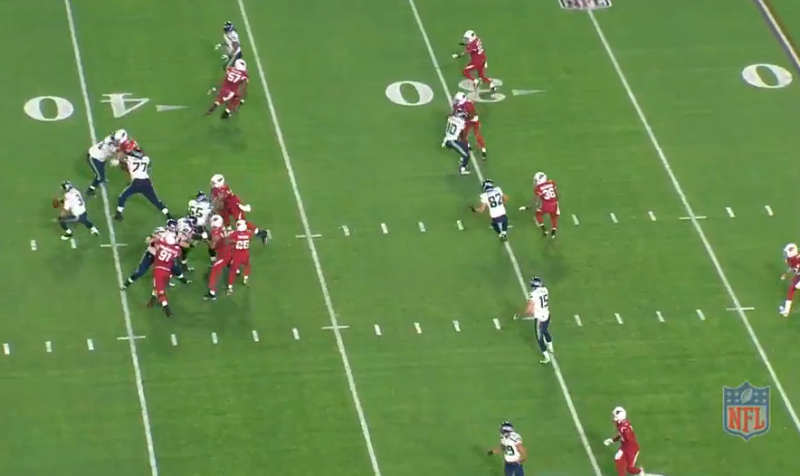
There are surprisingly quite a few more examples of plays like these, where Wilson had open receivers but for whatever reason didn't get them the ball, but I'll only show a couple more to get my point across. These following two plays, in my mind, were especially egregious errors by Wilson. The playcall was perfect from Darell Bevell, who anticipated the blitz by the defense in both cases and responded by calling a slant by Robert Turbin with a tight end clearing out the space underneath. In both cases, the call worked perfectly, and Turbin was wide open. The first play should have been an easy touchdown, and the second an easy first down. But Wilson hit neither of these, instead choosing to hold onto the ball, and was sacked in both instances. Not only is this a routine play, but it's a routine play that Wilson missed twice. All that film study won't do much good if the player doesn't learn from his mistakes.
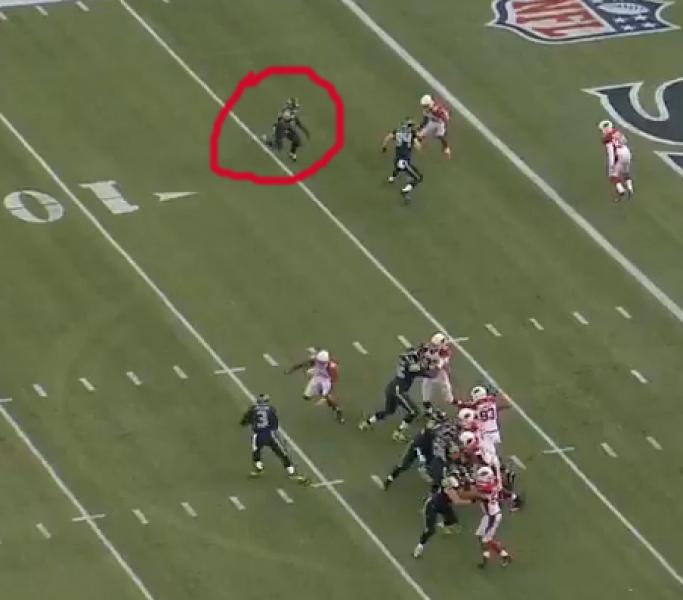
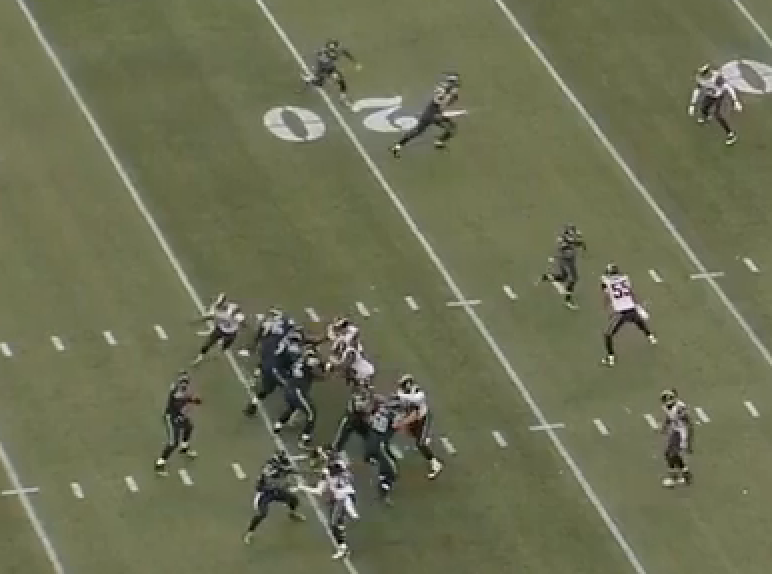
There are explanations for Wilson missing these seemingly easy opportunities. First of all, his offensive line is pretty horrendous in pass protection (especially against teams like the Rams and 49ers who have above-average defensive lines). Wilson is hit A LOT, which undoubtedly has some sort of mental effect on him. When a quarterback is uncomfortable in the pocket (which Wilson has a right to be, since he sees so much pressure), his clock starts getting accelerated, and the field isn't as clear to him. Russell Wilson's "oh crap, time to get out of here" clock is therefore probably quicker than it should be.
Another possibility is coaching. Pete Carroll is famous for his saying "It's all about the ball," referencing turnovers. Wilson does a fantastic job of not turning the ball over, and he should get credit for that. He might be hesitant to pull the trigger on some of these throws because he's being cautious, and hey, it's worked for Seattle. Sacks are better than interceptions. You see the inverse happening in Indianapolis, where Andrew Luck takes more chances because he has to--the Colts defense isn't as good as Seattle's is. So maybe Russell's hesitancy can partly be attributed to the foundation of the team.
Still, I think he leaves too many throws out there.
Doug Baldwin, over the middle (39-yard line):
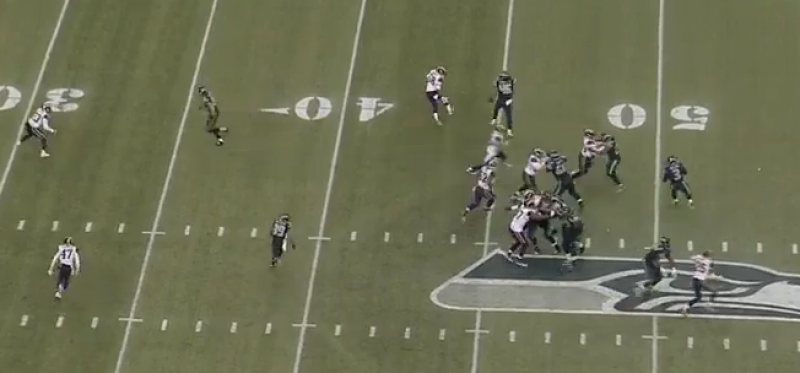
The tight end running open at the 34-yard line. A slightly more difficult throw, but one that the best in the NFL , and someone with Wilson's caliber of arm talent, should make:
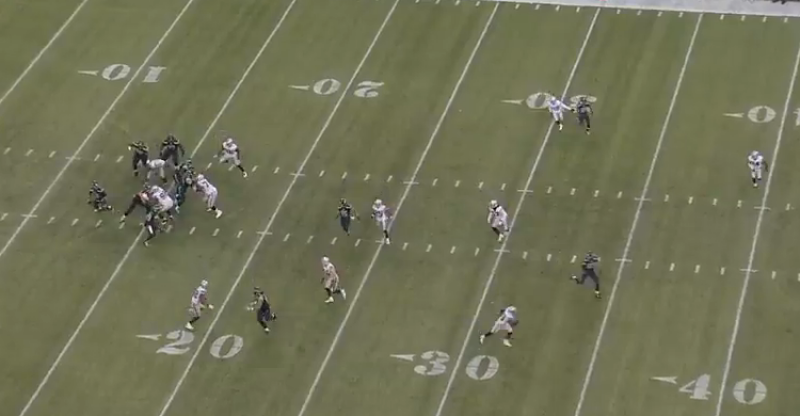
Wilson's arm is actually cocked to make this throw to his receiver (Wilson is pictured at the 33 yard line while his receiver is running open over the Seahawks logo), but for some reason ends up pulling the ball down and running for a minimal gain:
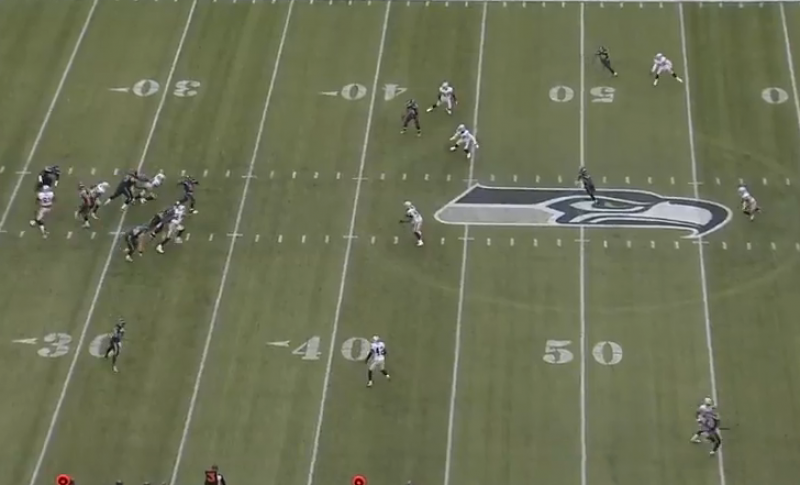
Another one, where Wilson fails to hit Doug Baldwin on a crosser. Baldwin is seen running at the 32-yard line toward a lot of open field here:
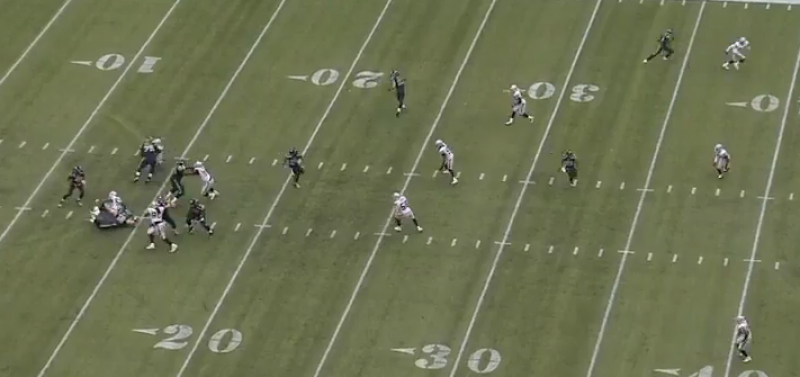
Wilson completes the ball to Paul Richardson, but holds the ball about a second too long. If he hit Richardson right when Richardson was first open at the beginning of the GIF, it's an easy first down. Instead, a hesitant, late throw led to a big hit on Richardson and no first down:

And here, Wilson has his receiver wide open on a slant after the 49ers corner comes on a blitz. Wilson ends up pump faking, getting outside the pocket, and throwing the ball away instead of completing this throw for the first down:
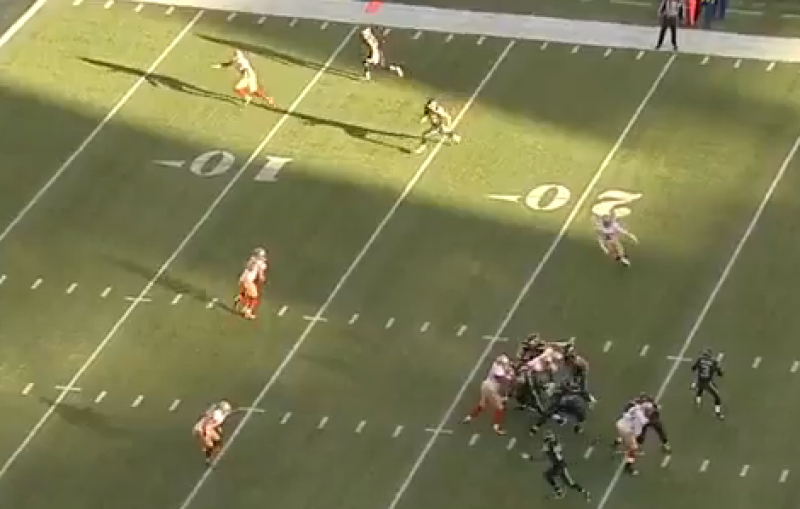
Yes, there is pressure on him, but this is still a relatively easy throw to Luke Willson or a harder (but still open) throw to Doug Baldwin:
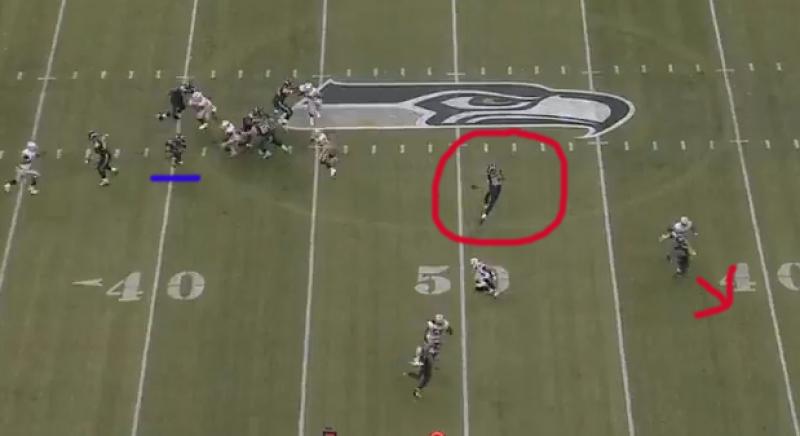
Here, Wilson has Marshawn Lynch wide open in the right flat for a first down, but retreats backwards and ends up throwing the ball away:

Here's another area of Wilson's game that was interesting to me. Last year, if Wilson had a single matchup on one of his receivers downfield, more often than not he'd take it. This year, not so much. He had single matchups outside here, and didn't pull the trigger:

And again here, with Jermaine Kearse at the bottom:
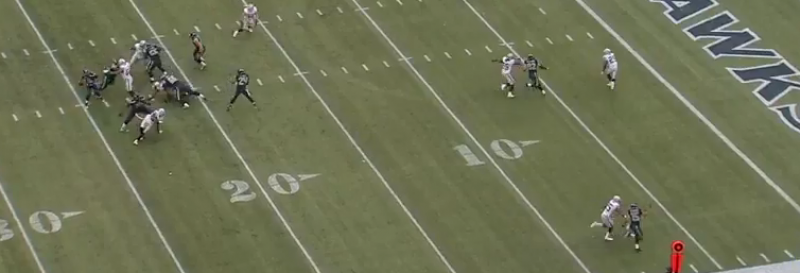
And here, Wilson stands in a clean pocket and passes up a single-covered Paul Richardson at the top of the screen:
To be clear, none of those examples (except the shown completion to Richardson) were completed passes. The vast majority of them weren't even attempted.
Which brings me to my next theory, which is that Wilson doesn't trust his receivers as much this year as he did last year. That's understandable, with Golden Tate (someone Wilson developed a significant chemistry with) gone to Detroit, and Percy Harvin shipped off to New York after practicing with Wilson all offseason. Those are practice reps that Wilson didn't get with another receiver, like Jermaine Kearse, Paul Richardson or Ricardo Lockette.
Throws like this, where Wilson trusts his receiver to make a play in single coverage, need to happen more often:
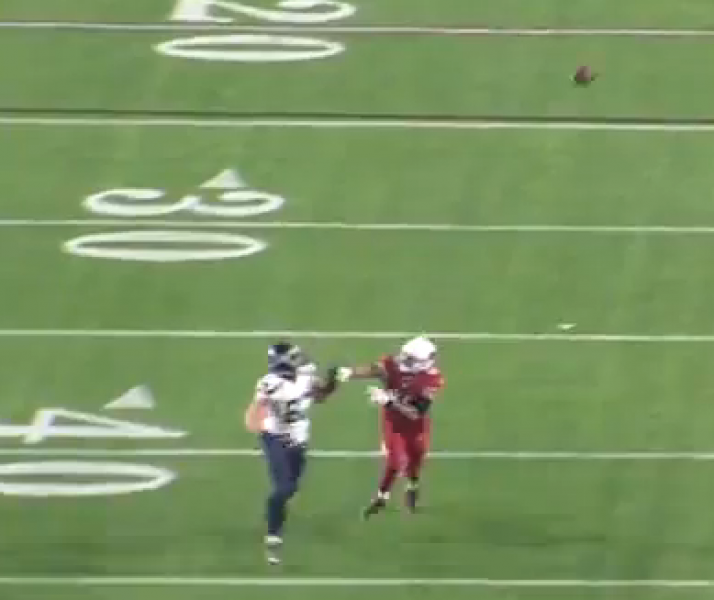
Now, Wilson has Doug Baldwin and Jermaine Kearse (and Luke Willson, to an extent, since he was with the team last year) as the only guys I think he has a real chemistry with. Good news is, Wilson really seems to have developed a nice relationship with rookie Paul Richardson as of late, who I think is going to be a star. But still, this lack of chemistry and trust with his receiving corps I think is a large reason for Wilson's faults in the passing game this year.
The chemistry between Wilson and Baldwin is extremely evident in all the timing routes they run. When a precision pass needs to be made, more often than not it is run to Baldwin:
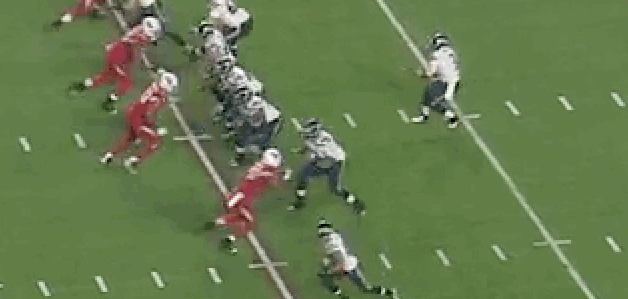
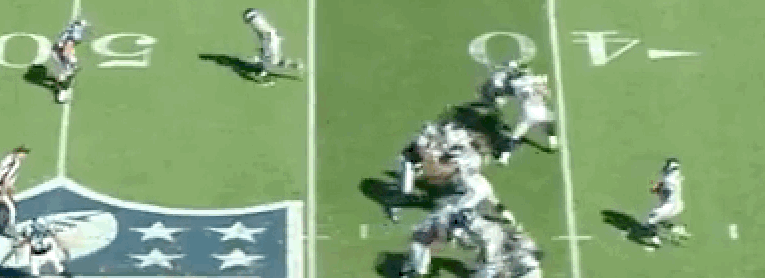
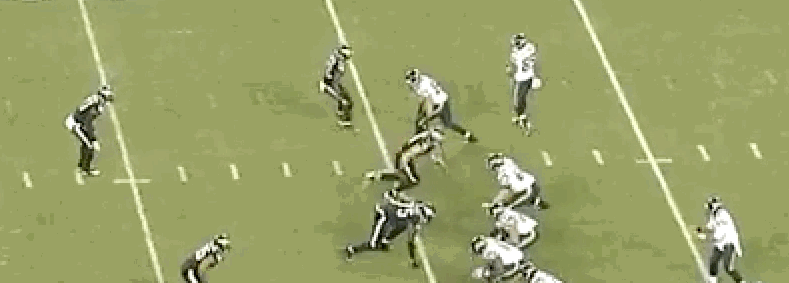
Although this one was to Luke Willson for the game-winning touchdown against Carolina:

All of these examples were three step drops where Wilson got the ball out quickly and on time. He needs to do more of this. According to Pro Football Focus, "When Wilson does get rid of the ball quickly (2.5 seconds or less), he actually has the top QB rating in the league (113.2) and a gaudy 73.9% completion rate. When he holds on to the ball 2.6 seconds or longer (54% of his dropbacks) his QB rating (75.7) plummets to 17th in the league."
As Wilson gets more comfortable with his receivers, you'd like to think that he'll start to pull the trigger on more of these timing routes, which he is evidently quite good at when he wants to be.
I mentioned before that the porous pass protection this year may also contribute to the passing game woes. I'd like to make sure this isn't understated.
Here, Wilson had Jermaine Kearse running wide open for a touchdown, but wasn't able to get the throw off due to immediate pressure:

And here, his arm was hit as he released the ball on an intended deep shot:
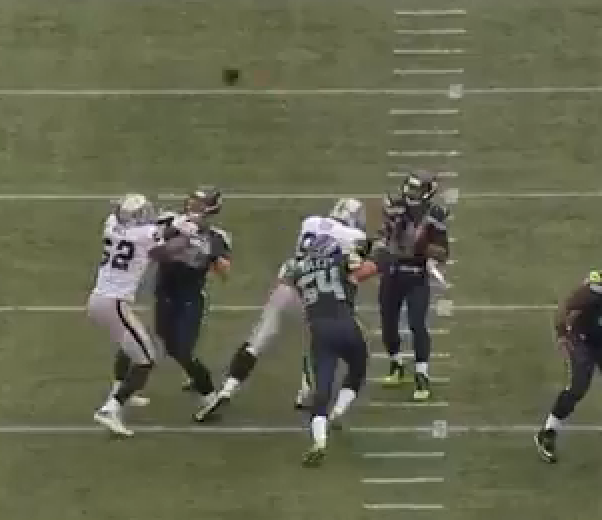
Immediate pressure blows this play up from the start (Wilson seen retreating back at the 37-yard line):
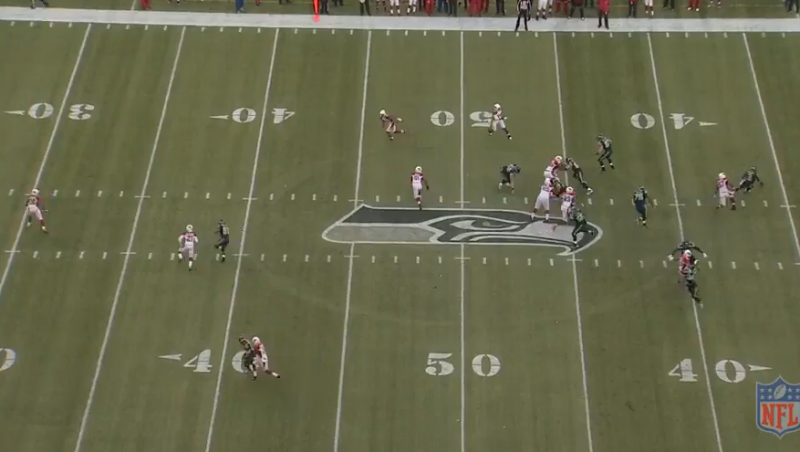
And more early pressure forces Wilson to tuck the ball down when he had Kearse open on a skinny post at the 14-yard line:
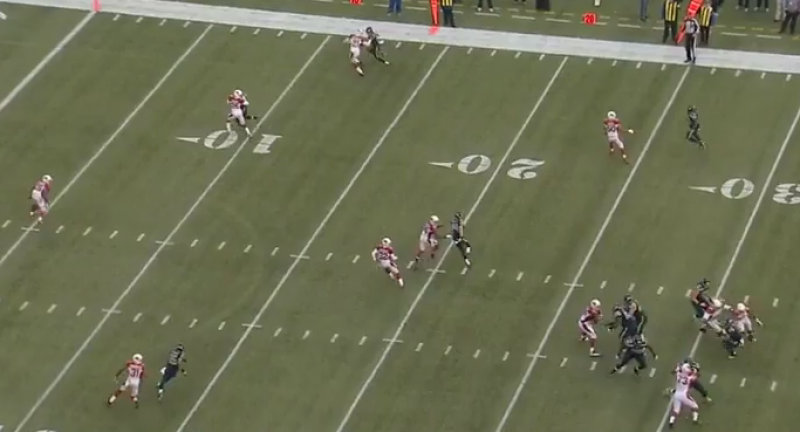
Seattle's offensive line was built for run blocking, not pass blocking, and that is entirely evident on game days. I honestly think Wilson would be able to see the field a lot better if he had more consistently solid pass protection, and that's where I think the front office should look to improve this offeason.
Russell Wilson is an amazing athlete, which is why the Seahawks are still 12-4 even with an offense that ranks 27th in passing yards. His escapability and athleticism are amazing, and will surely be a huge part of any potential deep playoff run.
But my concern is the fact that he can't do this forever. He can't continue to take the kind of beating he is taking and play another decade in the NFL. He's going to have to improve himself in the passing game, and start pulling the trigger and taking more chances especially when the surrounding quality of players declines when more of the Seahawks' salary room is taken up by his looming contract.
When something happens on an NFL football field, there usually isn't only one reason for it, and this is no different. The Seahawks passing game problems are the result of a combinations of things, like poor pass protection, questionable play at times from Russell Wilson, chemistry issues, and how the Seahawks are coached.
This team is 12-4. But just because winning hides problems doesn't mean they aren't there. Russell Wilson is going to have to do more through the air at some point, maybe even this year, if Seattle wants to continue to be successful.



